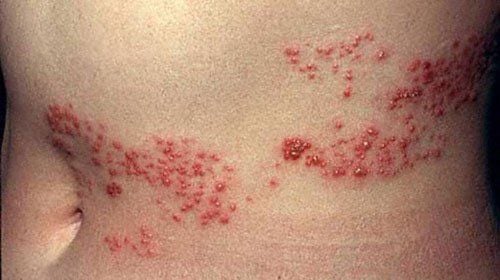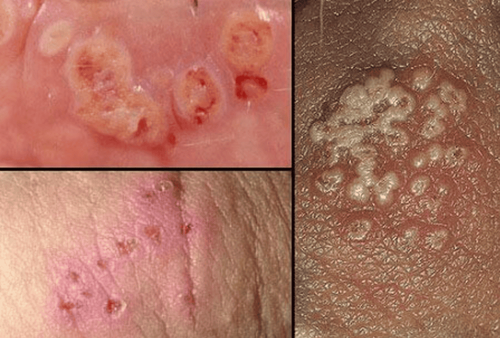Unprotected sex is one of the main ways sexually transmitted infections (STIs) are spread in general and HIV in particular. The rate of HIV transmission through sexual intercourse is about 0.03 – 1%, meaning that the risk of contracting HIV after one sexual encounter in the community is between 0.03 – 1%. However, to determine whether one sexual encounter can lead to HIV infection, we need to consider many risk factors.
1. What is HIV?
HIV is a disease that causes immune deficiency in humans due to infection with the HIV virus (Human Immunodeficiency Virus). When it enters the body, the virus multiplies and attacks the patient's immune system, including macrophages and T lymphocytes. This leads to a weakened immune function, allowing the development or invasion of microorganisms that cause opportunistic infections.
Humans infected with the HIV virus are the only source of the disease. There are three ways HIV can be transmitted from person to person, including:
- Blood and blood products: Sharing needles or medical equipment contaminated with the blood of an HIV-infected person, contact with open wounds containing infected blood, organ transplants, etc.
- Sexual transmission: Unprotected sex, not using condoms with HIV-infected individuals, leads to a high risk of transmission. The highest risk is through anal sex, followed by vaginal and oral sex.
- Mother-to-child transmission: An HIV-infected mother has a 30% chance of transmitting the virus to her child. Newborns can be infected with HIV from the mother through the placenta during pregnancy or through amniotic fluid, vaginal secretions, or blood containing the virus during childbirth. Additionally, breast milk can contain a certain amount of the virus, infecting the baby during breastfeeding. However, there are rare cases where children born to HIV-infected mothers test negative for the virus.
2. What Are the Symptoms of HIV Infection?
In the early or acute stage, the symptoms of HIV infection are easily mistaken for flu symptoms. Initial symptoms include fever, chills, aches, rash, swollen lymph nodes, etc. These initial symptoms usually disappear after about a month. During this time, the disease is highly transmissible. After that, the person infected with HIV may not show any serious or prolonged symptoms for many years.
However, the virus continues to multiply and weaken the immune system. The patient may experience symptoms such as frequent fatigue, fever, headache, diarrhea, weight loss, etc. If not treated and the virus's progression is not controlled, the patient faces the final stage - AIDS. At this point, the patient may experience unexplained weight loss, prolonged fatigue, and susceptibility to common infections. The characteristic of immune deficiency is manifested by diseases such as tuberculosis, pneumonia caused by Candida, herpes virus outbreaks causing lymph node cancer, shingles, etc.
Until now, science has not found a cure for HIV, but there are effective treatments to control the disease. With timely and proper treatment, people with HIV can live normal lives and have a life expectancy similar to those without HIV.
Additionally, proper treatment reduces the likelihood of transmitting HIV to others. In fact, treatments can reduce the amount of virus in the body to undetectable levels. At this level, HIV cannot be transmitted to others.
With recent advances in testing and treatment methods, many people with HIV can live long and healthy lives.

3. Can having sex with an HIV-Infected Person once Lead to Infection?
Sexual intercourse, especially unprotected sex, is a leading cause of the transmission of STIs in general and HIV in particular. According to the Centers for Disease Control and Prevention (CDC), the risk of HIV transmission in typical sexual intercourse from male to female is 8/10,000, and from female to male is 4/10,000. This risk increases with violent sex causing bleeding and open wounds. Generally, the risk of HIV infection is about 0.03 – 1%. This means that the risk of contracting HIV after one sexual encounter in the community is between 0.03 – 1%.
However, to determine whether one sexual encounter can lead to HIV infection, we need to consider many risk factors. The possibility of contracting the disease exists but requires certain conditions to be met.
Some scenarios include:
3.1. Unhealthy Sexual Partners
Unhealthy sexual partners are understood as partners with certain characteristics such as:
- Already infected with HIV
- High risk of infectious diseases, STIs
- Unhealthy sexual habits
- Multiple sexual partners at the same time
- Sex workers
If your partner falls into these categories, the risk of HIV transmission is extremely high, even with just one encounter.
This is why the national HIV/AIDS prevention program always emphasizes the slogan of monogamy
3.2. Unprotected Sex
Unprotected sex is engaging in sexual activity without using any measures to prevent infection or unwanted pregnancy. This is considered extremely dangerous, not only harming oneself but also affecting those around them.
Some unprotected sexual behaviors include:
- Not using condoms or other protective measures, especially in cases where pregnancy is not desired.
- Engaging in sexual activity too early, at an age not fully developed physically and mentally.
- Having multiple sexual partners at the same time.
3.3. Sexual Activity Causing Genital Injury
Injuries during sexual activity are not uncommon. These injuries can range from mild swelling and abrasions in the genital area to severe injuries such as vaginal tears, anal tears, penile fractures, requiring emergency intervention. This can be due to inadequate preparation, insufficient lubrication, or rough sexual practices.
Abrasions, injuries, open wounds, etc., on the genital area not only affect the sexual process but also increase the risk of HIV transmission. The HIV virus can easily enter through these injuries into the bloodstream, leading to a high risk of HIV infection.
3.4. Type of Sexual Activity
Anal sex is the type of sexual activity with the highest risk of HIV transmission, especially for the receptive partner. This is because the rectal mucosa is very thin, making it easier for HIV to enter the body during anal sex.
Vaginal sex has a lower risk of HIV transmission than anal sex but should not be underestimated. Most women with HIV are infected through vaginal sex. HIV can enter a woman's body through the mucous membranes lining the vagina and cervix. Vaginal secretions and blood can also carry the HIV virus and infect men through the urethral opening at the tip of the penis or through the foreskin if the penis is uncircumcised. Additionally, small cuts, abrasions, or open sores anywhere on the penis can become entry points for the HIV virus.
Oral sex involves using the mouth, tongue, or lips to stimulate the genital area, genital region, or anus of a partner to create arousal. In adult sexual life, this type of sex can be an exciting experience if performed with proper protective measures. However, it can also be a route of HIV transmission. Factors that can affect this risk include ejaculation into the mouth, mouth ulcers, bleeding gums, or sores on the genital area, and the presence of the HIV virus or other STIs.

4. How Long Does It Take to Contract HIV After Sexual Intercourse with an Infected Person?
To determine the time of HIV infection, it is necessary to understand the stages of disease progression and the characteristics of each stage.
Typically, the incubation period is the time when the HIV virus, after being transmitted into the body, multiplies until symptoms appear. This is the window period, a critical time to monitor closely to determine if a person has contracted HIV. Depending on the individual's physical condition, this stage can occur quickly or slowly. It usually appears after 1 to 3 months. However, the symptoms of this stage are easily mistaken for the flu, with symptoms such as fever, chills, aches, rash, swollen lymph nodes, etc.
This stage is also the golden time to use HIV post-exposure prophylaxis (PEP) medications when there are high-risk exposure behaviors. Immediately after suspecting HIV exposure, you should see a doctor and seek advice or go to preventive health centers for detailed and specific guidance.
5. What should you do when you find out you are infected with HIV?
If unfortunately the test results show that you are HIV positive, you must stay calm and listen to the advice from your doctor or medical professional. Here are some tips you can refer to when you know you are infected with HIV:
- You should not panic too much, HIV is not a social evil, in fact there are still many people infected with HIV who are healthy and live happily for many years or even decades.
- Inform the HIV/AIDS counseling centers to receive advice, you can be completely assured about the issue of revealing your identity.
- Stop unsafe sex and inform your sexual partners about your condition.
- There is no specific treatment for HIV so far, however, you will be prescribed medication to slow down the development of the HIV virus. Your task is to take the medication on time and in the right dose to prevent the development of the virus as much as possible.
- You can completely live and function like a normal person. You should not feel inferior but should live a life that is useful to life and to society.
If you suspect that you are exposed to HIV, do the right thing by going to an HIV/AIDS screening center to get tested so that appropriate treatment can be taken soon.
Please dial HOTLINE for more information or register for an appointment HERE. Download MyVinmec app to make appointments faster and to manage your bookings easily.













